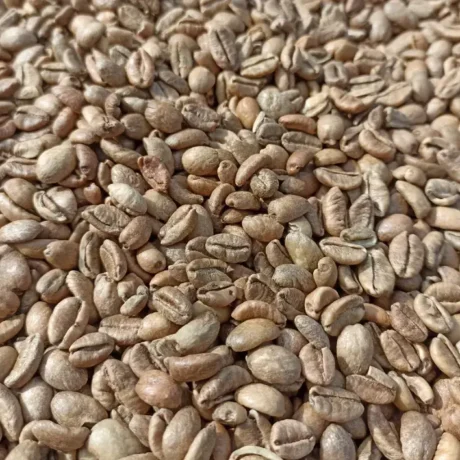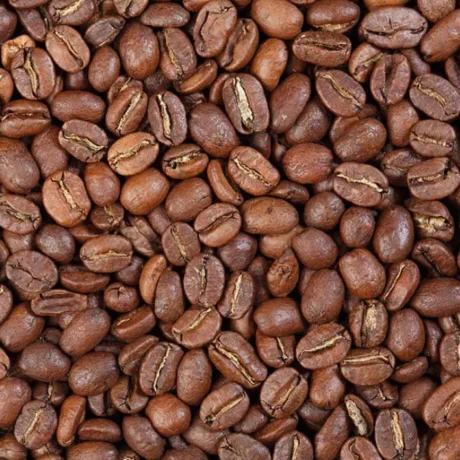Antioxidants play a crucial role in protecting the body from oxidative stress and its associated diseases. Coffee, a widely consumed beverage, is a rich source of antioxidants, offering various health benefits. This article explores the types, mechanisms, and health impacts of coffee antioxidants, supported by scientific research.
Table of Contents
Let’s understand what Antioxidants is
Antioxidants are molecules that inhibit the oxidation of other molecules, preventing the formation of free radicals which can cause cellular damage. This protective role is vital for maintaining health and preventing diseases such as cancer, cardiovascular diseases, and neurodegenerative disorders. According to Halliwell and Gutteridge (2015), antioxidants work by neutralizing free radicals, thereby protecting cells from damage.
In the human body, antioxidants neutralize free radicals by donating an electron, effectively stabilizing the reactive molecules and preventing cellular damage. Pham-Huy et al. (2008) explain that this mechanism is crucial for reducing oxidative stress and maintaining cellular health.
Common sources of antioxidants include fruits, vegetables, nuts, and beverages like tea and coffee. Scalbert, Johnson, and Saltmarsh (2005) note that polyphenols, a type of antioxidant, are abundant in many plant-based foods and beverages, including coffee.
Coffee is particularly rich in several types of antioxidants, including polyphenols, chlorogenic acids, and melanoidins. Vignoli et al. (2011) highlight that these compounds significantly contribute to the overall antioxidant capacity of coffee.
The total antioxidant content of different beverages.
| Beverages | One-time consumption rate, in grams | TAC, mg/g |
|---|---|---|
| Coffee | 7–10 | 150–300 |
| Green Tea | 2 | 150–300 |
| Black Tea | 2 | 110–200 |
| Cocoa | 10 | 200–250 |
The table above shows how much antioxidant content for each of the different beverages. It is shown that coffee antioxidant content ranges from 150-300 mg/g per 7-10 gr (one-time consumption rate)according to Yashin, A. et al. (2013).
Antioxidants in Coffee
Coffee contains a variety of antioxidants, with polyphenols being the most prominent. Chlorogenic acids are the main type of polyphenol found in coffee. According to Manach et al. (2004), chlorogenic acids not only contribute to antioxidant activity but also have potential health benefits such as improving glucose metabolism and offering neuroprotective effects.
Melanoidins, formed during the roasting process, also contribute to the antioxidant activity of coffee. Daglia (2012) explains that melanoidins have a significant antioxidant capacity and may also exhibit antimicrobial properties, adding to the health benefits of coffee.
When compared to other sources of antioxidants like tea, fruits, and vegetables, coffee stands out due to its high consumption rate and the potent antioxidant properties of its compounds. As Vignoli et al. (2011) point out, the antioxidant activity in coffee can be influenced by various factors, including the type of coffee bean, the roasting process, and the brewing method.
Mechanisms of Antioxidant Activity in Coffee
The antioxidant activity of coffee involves several mechanisms. Chlorogenic acids, for instance, can chelate metal ions, thereby preventing metal-catalyzed oxidation reactions. Scalbert et al. (2005) state that these acids inhibit the oxidative processes by binding to metal ions like iron and copper, which are known to catalyze free radical formation.
Another mechanism is the direct scavenging of free radicals. Halliwell and Gutteridge (2015) explain that antioxidants in coffee can donate electrons to free radicals, neutralizing them and preventing oxidative stress. This electron donation stabilizes the free radicals, rendering them less reactive and harmful to cells.
Additionally, melanoidins formed during coffee roasting exhibit antioxidant properties through their ability to act as free radical scavengers and metal chelators. Daglia (2012) notes that melanoidins not only provide antioxidant benefits but also contribute to the flavor and aroma of coffee, enhancing the overall sensory experience.
Health Benefits of Coffee Antioxidants
Coffee antioxidants have been linked to numerous health benefits. For cardiovascular health, chlorogenic acids have been shown to improve endothelial function and reduce blood pressure. A study by Manach et al. (2004) indicates that regular consumption of coffee rich in chlorogenic acids can lead to better vascular health and lower risks of heart disease.
Neuroprotective effects are also significant, with antioxidants in coffee potentially reducing the risk of neurodegenerative diseases like Alzheimer’s and Parkinson’s. Pham-Huy et al. (2008) suggest that the neuroprotective properties of coffee antioxidants may be due to their ability to reduce oxidative stress and inflammation in the brain.
Coffee’s anti-inflammatory effects are attributed to its high antioxidant content, which helps modulate inflammatory pathways. Vignoli et al. (2011) report that the polyphenols and melanoidins in coffee can reduce markers of inflammation, contributing to overall health and disease prevention.
The anticancer properties of coffee antioxidants are another area of interest. Research indicates that coffee polyphenols may help prevent cancer by inhibiting the proliferation of cancer cells and inducing apoptosis. Daglia (2012) explains that these compounds can interfere with various stages of cancer development, providing a protective effect.
Factors Influencing Antioxidant Content in Coffee
The antioxidant content in coffee can vary significantly based on several factors, including the type of coffee bean, processing methods, preparation techniques, and storage conditions.
Coffee Bean Type and Origin
Different varieties of coffee beans contain varying levels of antioxidants. For instance, Arabica beans generally have a higher antioxidant content compared to Robusta beans. According to Vignoli et al. (2011), the geographical origin and growing conditions of coffee plants also influence the antioxidant levels in the beans.
Processing Methods
The processing methods used after harvesting the coffee cherries can impact the antioxidant content. The degree of roasting plays a critical role. While light roasting retains more chlorogenic acids, darker roasting leads to the formation of melanoidins, which also possess antioxidant properties. Manach et al. (2004) discuss how roasting can transform the chemical structure of coffee compounds, affecting their antioxidant capacity.
Impact of coffee roasting process on the total antioxidant content
| No. | Type of Coffee | Producing Country | TAC, mg/g (Green) | TAC, mg/g (Roasted) |
|---|---|---|---|---|
| 1. | Arabica | Tanzania | 34 | 43 |
| 2. | Arabica | Ethiopia (Yirgacheffe) | 32 | 40 |
| 3. | Arabica | Brazil | 30 | 41 |
| 4. | Robusta | Bali | 65 | 63 |
| 5. | Robusta | Uganda | 67 | 55 |
The table above shows the Antioxidant content difference between green coffee beans and roasted coffee beans. The TAC values change after the roasting process. Generally, the TAC values increase after roasting, indicating that the roasting process may enhance the antioxidant content of coffee beans according to Yashin, A. et al. (2013).
Preparation Techniques
How coffee is brewed can significantly affect its antioxidant content. Methods such as espresso, filter coffee, and cold brew each extract different amounts of antioxidants from the coffee grounds. Vignoli et al. (2011) found that espresso generally contains higher concentrations of antioxidants due to its high pressure and short brewing time, which maximizes the extraction of beneficial compounds.
Storage and Freshness
The way coffee is stored can impact its antioxidant levels. Exposure to air, light, and moisture can degrade antioxidants in coffee over time. Daglia (2012) emphasizes the importance of proper storage conditions to preserve the antioxidant capacity of coffee beans and grounds.
Read also: Keep it Fresh: The Ultimate Guide to Coffee Beans Packaging
Controversies and Considerations
While coffee is celebrated for its rich antioxidant content and associated health benefits, it is important to consider potential controversies and caveats regarding its consumption.
Potential Negative Effects
Excessive coffee consumption can lead to adverse effects, primarily due to its caffeine content. High caffeine intake may cause insomnia, anxiety, and gastrointestinal issues. According to Pham-Huy et al. (2008), while the antioxidants in coffee offer health benefits, caffeine can pose risks for certain individuals, particularly those sensitive to its effects.
Impact on Specific Populations
Certain populations need to be cautious with coffee consumption. For example, pregnant women are advised to limit their caffeine intake due to potential risks to the fetus. Additionally, individuals with certain medical conditions, such as hypertension or anxiety disorders, may need to moderate their coffee intake. Halliwell and Gutteridge (2015) suggest that these individuals balance the potential antioxidant benefits with the possible negative effects of caffeine.
Balancing Coffee Consumption with Overall Diet
While coffee can be a valuable source of antioxidants, it should be consumed as part of a balanced diet. Over-reliance on coffee for antioxidants might lead to neglecting other important dietary sources such as fruits, vegetables, and whole grains. Scalbert et al. (2005) emphasize that a diverse diet rich in various sources of antioxidants is crucial for optimal health.
Bioavailability and Efficacy of Coffee Antioxidants
There is ongoing debate about the bioavailability and efficacy of coffee antioxidants. Not all antioxidants consumed are equally absorbed and utilized by the body. Manach et al. (2004) highlight that factors such as individual metabolism, the presence of other dietary components, and the specific types of antioxidants influence how effectively they are absorbed and exert their beneficial effects.
In conclusion, coffee is a valuable source of antioxidants, offering numerous health benefits supported by scientific research. From its role in reducing oxidative stress to its potential effects on cardiovascular health, cognitive function, and cancer prevention, coffee antioxidants play a significant role in promoting overall well-being.
However, it is essential to approach coffee consumption with awareness of potential negative effects, such as caffeine-related issues, and to consider individual circumstances and dietary patterns. By incorporating coffee into a balanced diet and lifestyle, individuals can harness its antioxidant power while minimizing risks.
Buy Indonesian coffee beans from us! Green Beans or Roasted all ready for you to buy.
Source:
- Halliwell, B., & Gutteridge, J. M. C. (2015). Free Radicals in Biology and Medicine. Oxford University Press.
- Pham-Huy, L. A., He, H., & Pham-Huy, C. (2008). Free radicals, antioxidants in disease and health. International Journal of Biomedical Science, 4(2), 89-96.
- Scalbert, A., Johnson, I. T., & Saltmarsh, M. (2005). Polyphenols: antioxidants and beyond. American Journal of Clinical Nutrition, 81(1), 215S-217S.
- Vignoli, J. A., Bassoli, D. G., & Benassi, M. T. (2011). Antioxidant activity, polyphenols, caffeine and melanoidins in soluble coffee: The influence of processing conditions. Food Chemistry, 124(3), 863-868.
- Manach, C., Scalbert, A., Morand, C., Rémésy, C., & Jiménez, L. (2004). Polyphenols: food sources and bioavailability. American Journal of Clinical Nutrition, 79(5), 727-747.
- Daglia, M. (2012). Polyphenols as antimicrobial agents. Current Opinion in Biotechnology, 23(2), 174-181.
- Yashin, A., Yashin Y., Wang, J.Y., Nemzer, B. (2013). Antioxidant and Antiradical Activity of Coffee. 2(4), 230–245.





